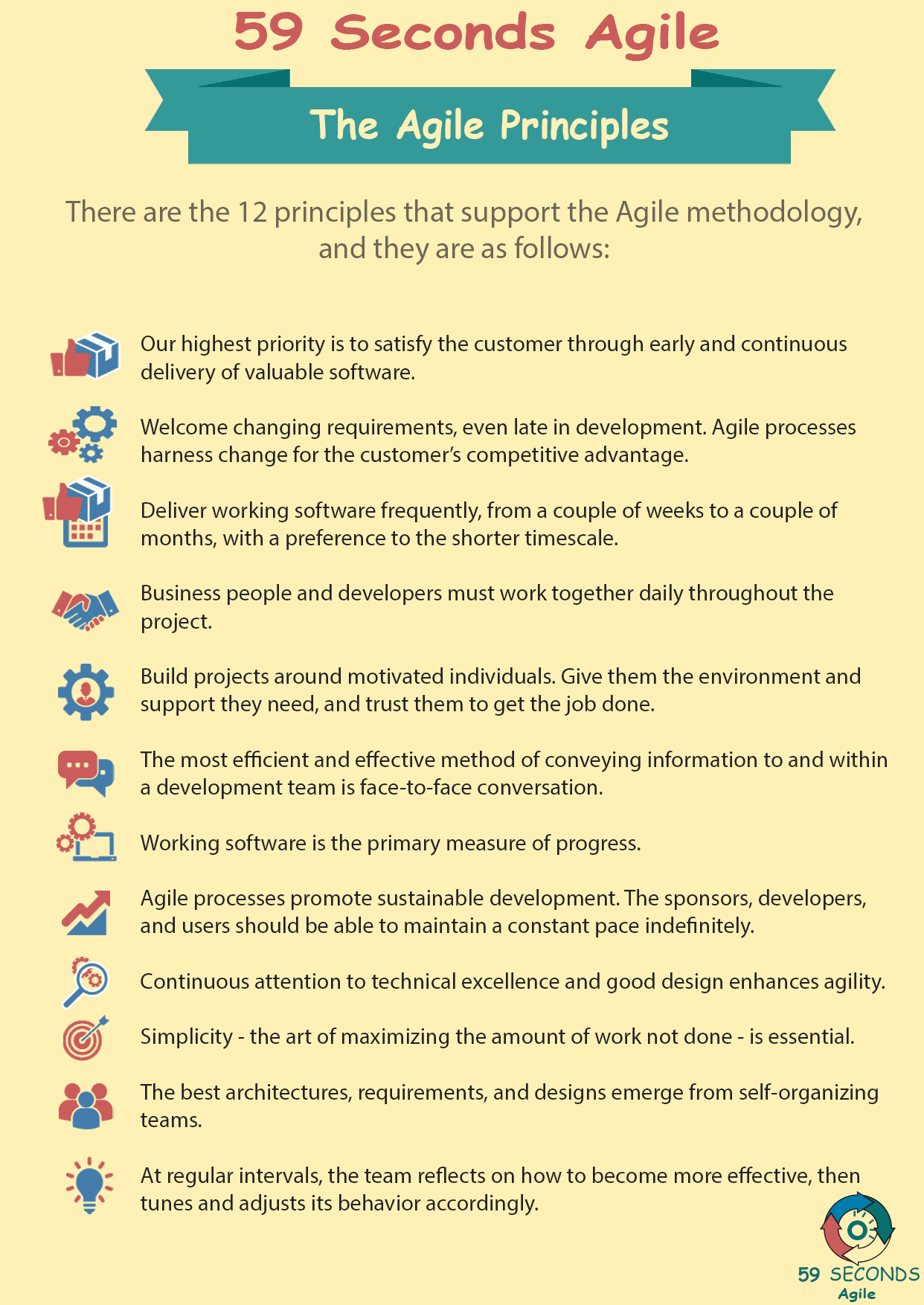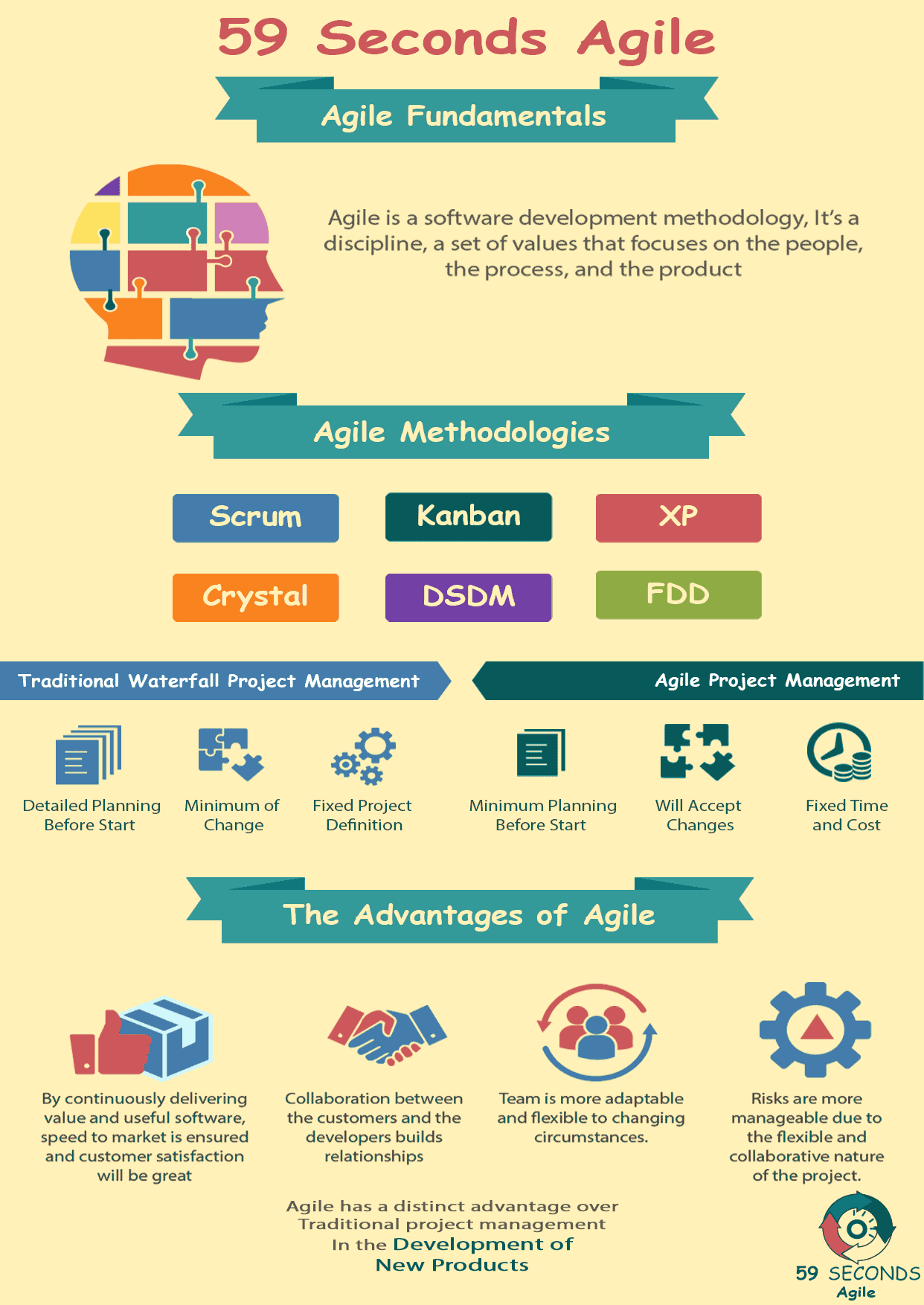This article looks to discuss ‘The 12 Principles of the Agile Manifesto’. Starting with the principle to ‘Promote Sustainable Development’ and moving through the rest of the 12 Agile Principles.
The Agile Fundamentals
A 59 Seconds Agile Video Animation
The 12 Principles of the Agile Manifesto for Scrum Masters – Part 3
A 59 Seconds Agile Article
The 12 principles of the Agile Manifesto: Promote Sustainable Development
Agile processes promote Sustainable Development. The sponsors, developers, and Users should be able to maintain a constant pace indefinitely.
In agile, there is a constant production of the software features over a long period. The amount of effort and time which is invested by the team in the development process has to be constant during the whole process. This does not only apply to the developers but also to the other team members such as the sponsors, and users. All stakeholders should move at the same pace with the project, and no team member should feel pressed. The result of this will be a smooth running process, hence the success of the project.

The 12 principles of the Agile Manifesto: Continuous attention to technical excellence
Continuous attention to technical excellence and good design enhances agility. In agile, a good design and architecture of the software take the center stage. The development team works together so as to review and critique each other’ work, building patterns of good design and architecture. Due to the combined effort, the skill set of the team will increase, leading to the emergence of improved designs. The overall result of this will be the success of the project.

The 12 principles of the Agile Manifesto: Maximizing the amount of work not done
Simplicity – the art of maximizing the amount of work not done is essential. In Agile, the development of the project is done in iterations. During each iteration, the development team has to pick the prioritized features which are doable and they go ahead to implement them. The development team has to strive hard for simplicity by cutting out the things which do not add value. The aim is to put maximum effort on the features which will make the customers accept the product, leading to project success.
Our Favourite Agile Books
We found these books great for finding out more information on Agile Scrum:
The 12 principles of the Agile Manifesto: The best architectures
The best architectures, Requirements, and design emerge from self-organizing teams. The quality of the final product is highly dependent on how the team is organized. Every team member should take responsibility and do the tasks they are supposed to do. Other than possessing all the skills which are necessary for the development of the project, the team members should be capable of organizing themselves. This will result in best architectures, requirements, and design, hence project success.
The 12 principles of the Agile Manifesto: Reflect on how to become more effective
At regular intervals, the team reflect on how to become more effective, the tunes and adjusts its behavior accordingly. In agile, the team is geared towards delivering a high-quality product which is acceptable to the users. User satisfaction takes the highest priority, which calls for the team to look for ways on how to achieve this. The team has to assess themselves in terms of how they have adhered to the agile principles. If some deviations are found, they have to adjust accordingly. If a new way of becoming more effective is found, then the team has to adjust in line with that. This will result in the development of the right product for the users, leading to the success of the project.
Prev <— Continue Reading —> Next
User Stories Applied
A 59 Seconds Agile Book Review
User Stories Applied by Mike Cohn is one of our favourite books on Agile User Stories. The book starts with an overview into user stories, and details what a user story is and the different aspects of them. He then discusses how to go about writing a user story, and provides details of the INVEST criteria that can be used to determine if the story is meeting all of its objectives. Next Mike gives an in depth discussion of who user stories are written for and where to begin when gathering the details for them. The book then discusses acceptance testing user stories, including how to go about specifying these criteria and the responsibilities of the development team and customers during this process.
Prev <— Continue Reading —> Next
Learn More
Agile Project Management Training Courses
Agile Fundamentals
A 59 Seconds Agile Infographic

